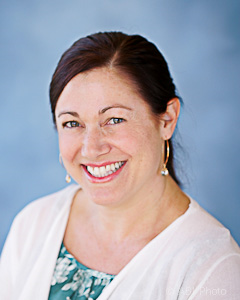At SpeakersOffice, we receive a lot of inquiries from new speakers who are seeking representation. One of the most common difficulties for speakers who are just starting out in this industry is collecting quality video footage. As a speaker, your best marketing will always be doing what you do best (that means speaking!). The second best marketing is good ol’ word of mouth – someone sees you speak and recommends you. Aside from these top two ways clients find out about excellent speakers, your next best marketing tool is video.
Years ago, speakers were expected to have professionally edited “demo videos.” They frequently featured a voiceover actor introducing the speaker, background music, live testimonials from attendees onsite, rolling client lists or logos of companies they’ve spoken for, media interviews and of course – the most important ingredient – speaking clips. With the popularity of YouTube, Vimeo, and other video sharing sites, nowadays the expectations are different – which is good and bad. It’s not necessary for new speakers to invest in a professionally created demo video because potential clients really just want to see you speak. Not that the other stuff is bad, but it’s “fluff.” This is good news because new speakers can save money by collecting, editing, and uploading their own video footage! It’s bad news because now, if you’re not such a great speaker, you can’t hide behind all the “fluff.”
When we hear from a new speaker who is interested in having us manage them, the very first thing I do (and probably what most potential clients do, too) is go to their website and look for video samples. Yes, I review their bio, program descriptions, client list, testimonials, and everything else, too. But if they have no video available, I don’t bother. Anyone can sound good on paper, but prospective clients want to see how dynamic you are, get a sense for your presentation style, personality, humor, confidence, poise, etc. Dr. Albert Mehrabian conducted several studies on nonverbal communication and found that 7% of any message is conveyed through words, 38% through certain vocal elements, and 55% through nonverbal elements (facial expressions, gestures, posture, etc). This is where the statistic that 93% of all daily communication is nonverbal comes from and should help you understand why video is so important.
New speakers often tell me collecting video footage is like the chicken and the egg syndrome. You need the engagement to get the quality video, but you need the quality video to get the engagement. Collecting video footage should not be a one-time activity – it should be something speakers do throughout their careers. You should always be collecting new video footage, as much as possible. You never know when you’ll have the most energetic, responsive, participative, and emotive audience ever! When you do, it’ll make you look like a star and that’s what you want to capture. (Many speakers are nervous about allowing clients to video record, for fear it may be used in a way that goes against other licensing agreements, is made available for public access, etc. There are ways to restrict video usage, but that’s best left for another post.) As a new speaker, you should not be worried about this. You are at more of a disadvantage by not having video samples, than you are if a group uses it in a way you wouldn’t prefer.
Here are some strategies for collecting video footage early on in your speaking career (or when you’re an established speaker developing a new program):
- Regardless of whether or not it’s a paid engagement, consistently ask if it would be possible for the client group to have your talk recorded. If they’re already having a professional a/v crew there, chances are high they can provide this for free or a nominal fee that’s much less than if you hired your own videographer. Ideally, you want a two-camera video: one on you and one on the audience. If that’s not possible, anything is better than nothing.
- If they’re not planning to have a professional a/v crew onsite, ask them if they have a member or sponsor who might be willing to record for you.
- Offer to speak for free or submit session proposals to a few choice industry associations, if they can provide a high quality video recording of your talk.
- Apply to speak at several regional TEDx events. They record all talks and it’s fabulous exposure to potential clients in your area! The popularity of TED and TEDx events has radically transformed the speaking industry and how people find out about new and up-and-coming speakers.
- Approach a few of your best consulting clients or companies you used to work for and offer to speak for free at their next meeting in exchange for quality video footage.
- Join an organization like the National Speakers Association and take advantage of special workshops to help new speakers create sample videos.
- Hire a videographer to come and record your next talk to an audience of at least 80-100 people. It’ll be well worth the investment!
If after looking at the list above you’re thinking, “Geez, this is going to take a lot longer than I thought,” you’re right. It’s not easy to collect video footage, it takes time and effort, and it won’t all turn out to be as high quality as you’d like. But there are hundreds, even thousands, of speakers out there who struggled with the same process. Try utilizing a few of the strategies above and, remember, most successful speakers you encounter started out the very same way.
Michele started her career in 1999 at a speakers bureau in Northern California and joined SpeakersOffice, Inc. as Director of Client Relations in 2005. She has served on the board of directors for the San Diego Chapter of MPI and San Diego chapter or ASTD, and received several awards for her volunteer leadership. She can be reached at moc.eciffosrekaeps@elehcim.
